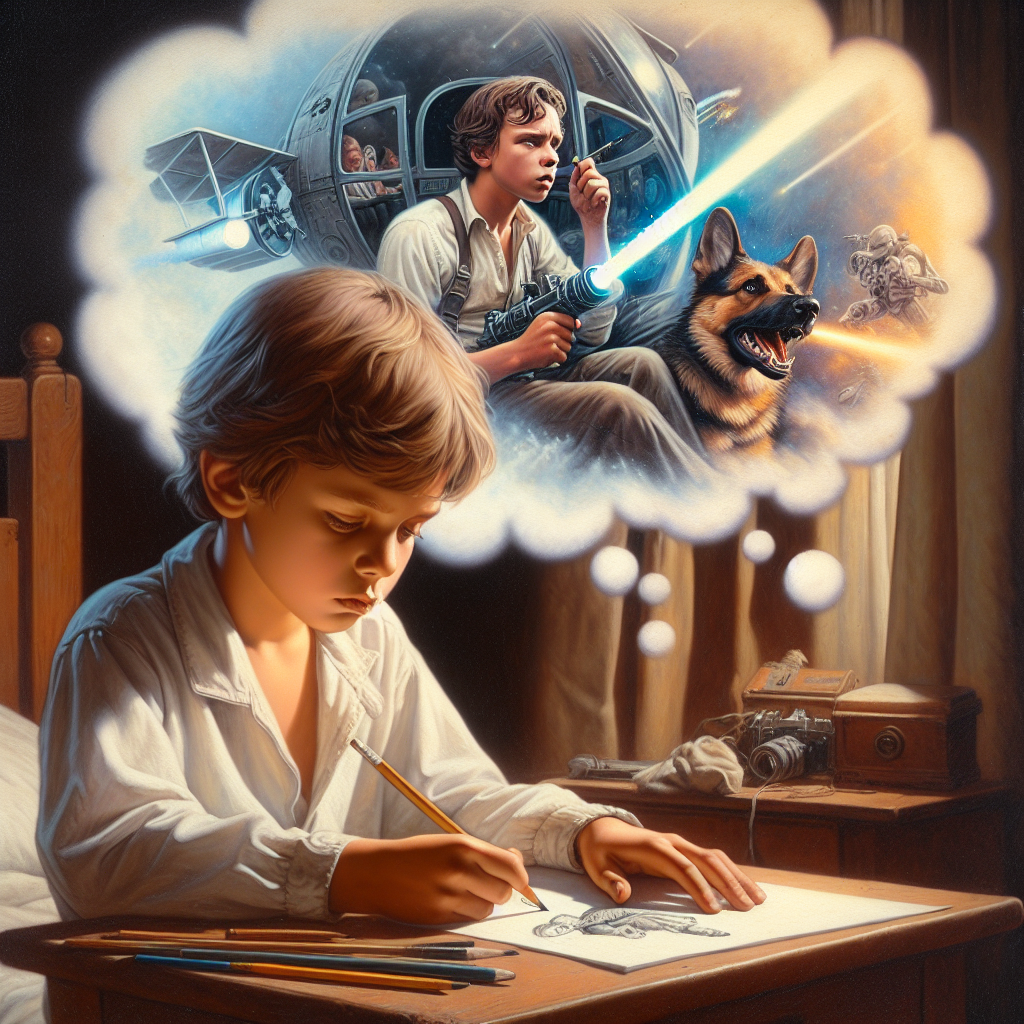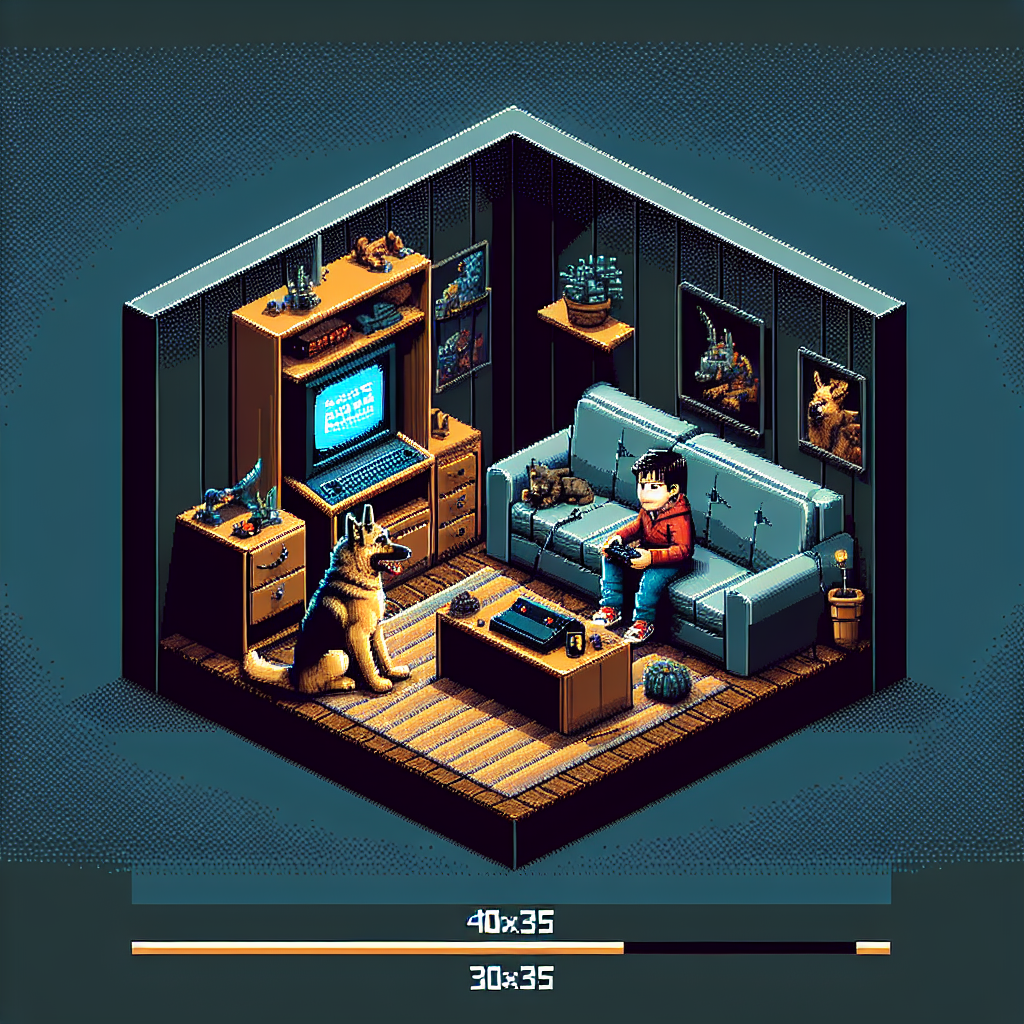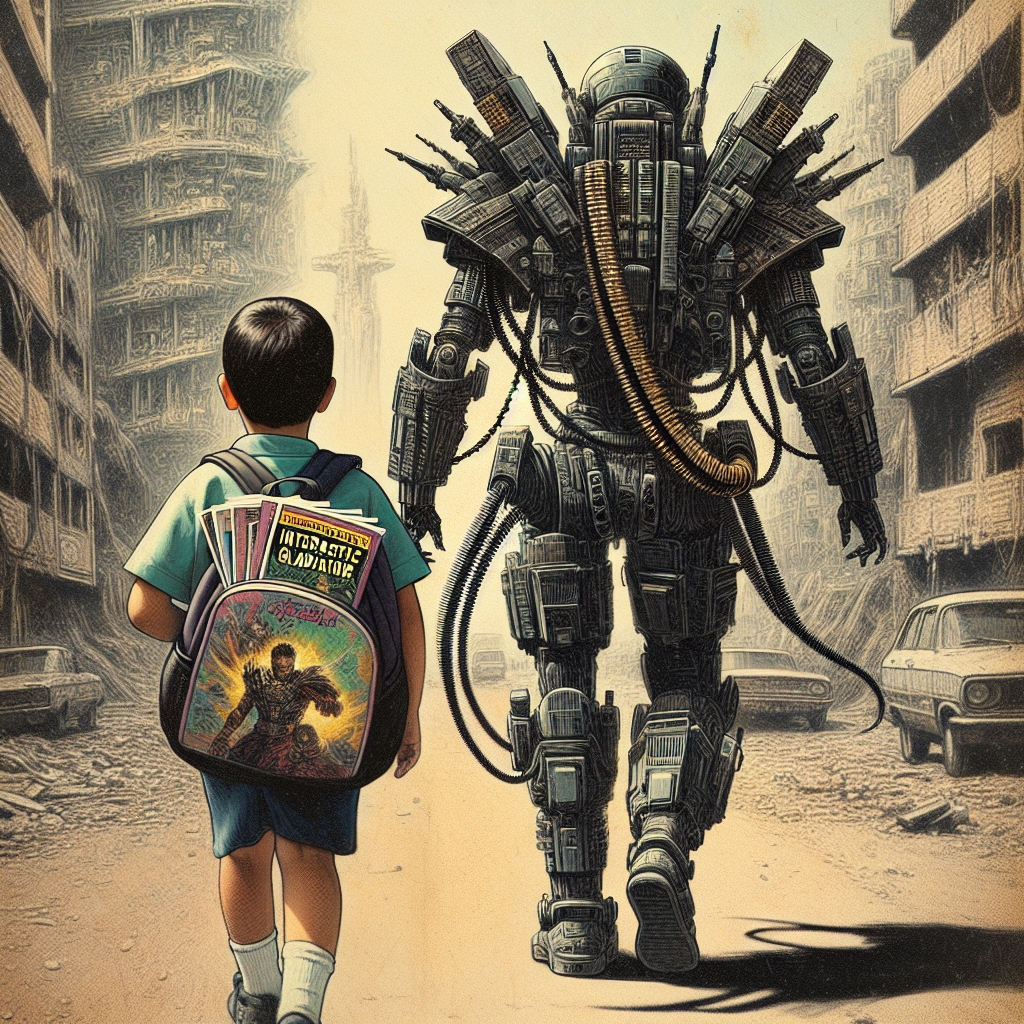In 1991, I had a dog named Youki, and like any other 8-year-old kid, I loved drawing, so I started a “project”, a comic book called “Raouf & Youki”, where the two partners in crime lived epic adventures in our world and others. After an initial survey with target customers – aka classmates- I rebranded the product into “Intergalactic Gladiators” – better for marketing they said.
It was somehow a candid version of Rick & Morty, where Rick was a -sober- kid and Morty an incredibly brilliant German Sheperd. I had the skills and the financial means -paper, pencils and markers- to build my MVP, so I decided to bootstrap the project.

My first iteration was a 30-page comic book where the duet sneaked into a NASA rocket ship…in Central Park (sorry for the approximations. I was living in Algeria…). Youki chewed the rocket’s wire and somehow managed to boost the propulsion system, and here we are out of the solar system with the rocket crew exploring weird inhabited planets!
I was so proud of the final product that I tried to pitch my first distributor, the local library store.
My plan was damn straight: She sold comic books at 50 dinars, I offered mine at 25 to let her with a comfortable 100% margin and, for me, these 25 dinars were 100% profit as I had access to raw materials (paper and pen) for free and of course, as a kid, you don’t price your time nor your skills.
I needed to sell 100 units only to buy my ATARI 2600, so I offered to produce 10 per week; I was sure that everything in my plan was valid, so I didn’t anticipate any objection.
She politely listened to my pitch with a smile and then informed me that libraries can’t buy and sell hand-written books.

She handed one book over to me and explained that, unlike mine which was more of a draft, this is how a published book should look.
This first “no” was a revelation and an opportunity, my dad had a copy machine at the office, and printed copies meant that I could make the 100 units right away and buy my Atari next week, so I asked her for a 48-hour delay and a second meeting.
Two days later, I came back full of confidence with five copies in my backpack and the expectation to leave the shop with 125 dinars and an order for 95 more copies.
This time the lady took the time to walk me through the entire process of the publishing game, in detail and using simple words.
Patiently she answered all my questions -probably to prevent another attempt from my side with a plan C- and the more I learnt about this business, the more it was clear that it was not the quick win I was expecting.
The market’s reality hit me hard: It was too complex and capital intensive: Not for me. But I was not ready to give up yet. If the middle-man was not ready, I would go D2C.

I focused on the playground as it had the highest concentration of potential customers.
I faced many rejections even though I lowered my price and was ready to trade copies for gadgets.
Five minutes left before the break’s end, and I didn’t sell a copy, so I added an element to my pitch: Ask my friends -and potential customers- why they were not ready to spend 20 dinars on a -fantastic and unique- comic book like mine?
The answer was unanimous: They were not ready to spend money on a story about an adult muscular version of me with my dog. Would they pay for an original drawing depicting their favourite character? They -almost- all replied positively.
My failure was not the consequence of my lack of talent or the quality of my story. What a relief! I abandoned the idea of selling my comic book, not the idea of selling my drawings -and acquiring the so-coveted ATARI. I only needed to adapt my offer to meet my target market demand.
I “interviewed” my most reluctant “client” to know who are his favourite characters.
As expected it was Captain Tsubasa and Goku (DragonBall), he was not ready to pay 10 dinars for that but we agreed on five!
In the next few days, my new product was on the market and selling like hotcakes.
For five dinars, you could please yourself with an original drawing of an epic DragonBall battle or Captain Tsubasa (Olive et Tom for the connoisseurs) turning the ball into a pancake with his magic kick.
Of course, I never sold the 600 drawings necessary to buy the Atari, my business was neither scalable nor replicable. However, I managed to buy a used Gameboy with a broken B button that I repaired with some gum and aluminium foil.
Beyond material satisfaction, this first step into “entrepreneurship” taught me two important lessons. It’s much easier to sell something designed to please your customers and built with them than force-feed them something you’re the only one who thinks it’s brilliant.
Building something people would buy is the most natural and satisfying way to make a living, but it’s not a one-shot process and finding the silver bullet requires many attempts and a lot of resiliency.
So if you want to succeed as an entrepreneur, be an active listener and use your creativity to meet your customers halfway (a compromise between what you can achieve and what they want is better than nothing).
And if you are launching a product that you love but the numbers don’t follow, take a step back and talk to your current users (or potential if you have none), it’s often easier to fix a prototype than stack features based on your assumptions!
Best of luck!
If you liked this piece, I also publish on my linkedin, Medium and Substack, so you can pick the weapon of your choice 😉
📣 Want to make a difference?
Join us for this volunteering opportunity as a community shaper
If you’re ready to make a tangible difference and help shape the clean energy revolution in your community, we want to hear from you at CTRL ENERGY! This is a unique opportunity to be part of something transformative. As a Community Shaper, you’ll be playing a critical role in bringing sustainable, affordable energy to people everywhere. Let’s build the future together!
🍿 WE👽CTRL⚡ENERGY #01
Pop corn time, the first episode of our Podcast is here, demystifying energy while having fun and bringing value, this is what it’s all about, after all our company’s slogan is Bridging The Energy Gap, in addition to Youtube the podcast is also available on SoundCloud and Spotify just in case you are driving 😬 happy to see you joining for the upcoming episode just ping me and have a chat!
That’s all folks! Next week I’ll share a story/ manifesto about what drives me as an individual and us as a team, so if you want to have a fresh perspective on our future stay tuned !